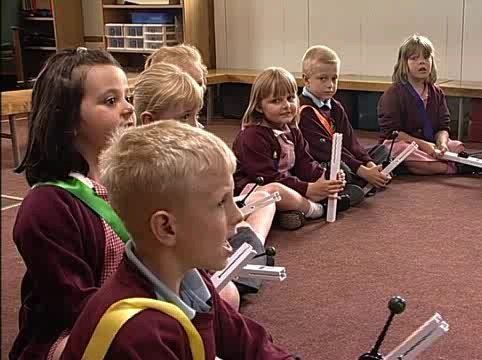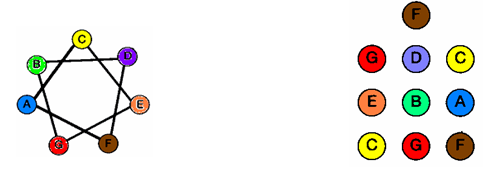Every Child Could (and should!) be Musically Literate by the Age of 8

I've been reflecting upon my recent new students... keen, bright, capable and yet the school system has given them little in the way of musicianship skills and knowledge. Controversial as it may seem, I had to dig out the following article that I drafted for 'Music Teacher' Magazine in 2008 and sadly.... 12 years later I'm sorry to say that our music education is still in the same state... Failing our children.
Here's what I said in 2008...
The challenges of teaching music in the classroom
The psychology of teaching music has fascinated me throughout my career and I have always been looking for a way to overcome the elitism in music education. I began my career as a secondary school music teacher, teaching ages 11-18 and found that one of the most difficult things to manage in the music lesson is the enormous range of musical abilities. More often than not the music teacher has to teach mixed ability classes and whilst there is always a minority of privileged children who have a wealth of musical experience there are a great many who have little. Sometimes I would be faced with a class that had one or two pupils who were grade 5 standard whilst the lowest ability children couldn’t maintain a steady beat. If the English teacher had an equivalent class they would be confronted with some children who had been studying Hamlet whilst others could not even read or write. The teacher would be outraged and would probably resign given the impossibility of trying to differentiate for such a class. However this is what the secondary school music teacher has to deal with year upon year.
I always wanted to see if I could find a way to overcome this gulf of experiences and abilities and thought that primary school children could probably do a great deal more than anyone suspected. I decided I wanted to get to the root of the problem so I took a post in a primary school where I have been a music teacher and coordinator for the past four years. I soon realised that whatever I was going to do needed to be inexpensive, accessible to all abilities and possible to maintain and implement long term; these factors became my self imposed brief. I spoke to instrumental teachers and most of them commented that music illiteracy is a big barrier for many children. I researched and looked at a number of resources on the market and finally took time to look at the Tobin Music System website www.tobinmusic.co.uk I have used the Tobin Music System for the last three and a half years and the effects are far reaching. My only regret is that I dismissed the system when I was teaching in the secondary school; I had heard of the Tobin Music System every now and again but I thought it was just concerned with colouring the notes to help little ones. I was mistaken.
The website captured my imagination and I visited Candida Tobin in Sawbridgeworth, Hertfordshire to observe her taking Saturday morning classes. It was an eye opener to see how much infants could manage. Their aural memory facility was excellent; they were quickly and accurately notating 4 bar rhythms using rhythmic shorthand after just one hearing. Candida revised the notes across the great stave with them and I thought how ambitious this was but they could immediately identify the notes and although no colours were being used on the board that day I realised that the coloured mnemonics were all in the children’s’ heads!
That morning the second class (ages 6-8) worked on all of their cadences and settled down to composing a piece for bassoon; I expected a few notes scribbled down but they produced lovely minuets in ternary form using all their cadences and relative minor chords. I had never seen scales or harmony presented in a circle before but it makes life so much easier! The children played a movement game with hand chimes to work out relative minor chords; I was stunned to see these concepts being easily taught and in such an enjoyable way. I wondered if the children were selected for the classes on aptitude but Candida explained that she will teach anyone and many of the children she works with have learning difficulties such as dyslexia.
I admit that part of me was actually frightened to embark upon such an approach in my own teaching because it was so different but I had always wanted students to have a real understanding of music and it was happening before my eyes with infants let alone teenagers. I could have ignored what I had seen and carried on with what I knew but this method was far better than anything else I had seen or tried before. I made a decision to train with Candida and implement the method in my own school and private teaching practice.
My teaching has changed beyond all recognition and definitely for the better. By the time my students go up to high school they are competent and musically literate composers with well developed rhythmic and aural skills. The system enables the children to develop rhythmic skills by engaging all of the senses.
As a child I accepted the familiar lesson ‘This is a crotchet worth 1 beat’ but of course this is not true in time signatures such as 4/2 and these concepts were all taught in a very dry, boring and illogical way. Infants take easily to the concept of a whole note, half note, quarter note and even the eighth notes by using the shapes shown below and saying French Time Names. Therefore they can go onto to understand all of their simple time signatures and compose and play rhythms confidently. The general classroom teacher can deliver this easily and incorporate it into the maths lesson; it not necessary to be a specialist music teacher.
My infant classes go on to learn all of the notes across the great stave through a series of coloured mnemonics. These concepts are presented in an interactive way; it is important for all the senses to be engaged. Once the notes are coloured the children can easily see that there are only seven different notes, that the note G is followed by A (not H!) and they can see that an octave is the distance of eight notes. This can’t be put across to youngsters effectively without the use of colour.
Junior students can work out any major scale by using the notation ruler; imagine children aged 9-11 telling you the key signature of B major, Ab major etc..!
They can compose meaningful pieces in ternary form using the primary chords, relative minor chords, cadences and passing notes. I know from experience that the work of these 9-11 year olds is better than many GCSE music students. They play their compositions on recorders and pitched percussion instruments and they know they have accomplished something worthwhile.
I have fulfilled my brief; my primary pupils are all musically literate composers and have developed essential musicianship skills. It was not expensive and all of the children have made excellent progress regardless of age or ability. This method did not involve expensive orchestral instruments or the hiring additional music teachers and it can be sustained and developed year upon year. Pitched percussion instruments, recorders, shapes and coloured pencils – that’s all I needed.
To my shame my high school students never achieved a deep level of understanding, not many of my KS4 students truly understood what it was all about yet I was considered to be a successful and very effective teacher. I wish I had made the effort to look at the system years ago when I was teaching in high schools; I should have implemented it as part of the music curriculum. Teaching theory and harmony and developing vital musicianship skills does not have to be boring or ‘fuddy duddy’. The students do not regard this as learning about ‘classical’ music because understanding pitch, rhythm and harmony is at the core of all kinds of music whether it be composing a waltz, pop song or using a mixture of cultures. Once we equip them with skills, knowledge and technique it is up to them how they choose to be creative but they have to be given the tools to build upon and explore.
I have an increasing number of private teenage students who come to learn music with me because they struggle with music literacy and eventually they are advised to learn to read and write music in order to progress further. I still present it in colour and use shapes and patterns but we move at a quicker pace because the students are older; they are delighted to be able to work things out for themselves. Time after time the pupils and parents all say to me ‘That’s brilliant! Why don’t they do this at school?’
If I could put myself in a time machine and go back a few years to my secondary teaching days I would rapidly put year 7 through all the fundamental concepts of the Tobin Music System in the first two terms. It is easy to set the experienced pupils more challenging tasks whilst meeting the needs of the less able using these multi-sensory techniques. I would also share the Tobin Music System with all my feeder schools and empower the non specialists with the techniques and confidence to teach music to a high level. It would be marvellous to have a whole community of teachers all working together; putting on concerts and festivals for the children and involving instrumental teachers and parents. I believe that this is what we should be aiming for in education so that the children in Britain can enjoy a truly progressive music curriculum.
Perhaps we are ready for a change; I think that there is a place and a need for the Tobin Music System in our secondary schools who need to work closely with the feeder schools to ensure progression and continuity. I am curious to see how far we could stretch the secondary aged students; would anyone like to join me in my next music education adventure?





